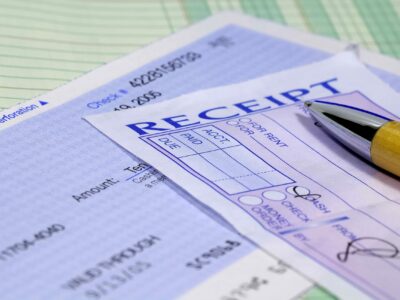
For this reason, both IFRS and ASPE allow net realizable value (the net amount expected to be received in cash) to approximate the fair value for short- term notes receivables that mature within one year. However, for notes with maturity dates greater than one year, fair values are to be determined at their discounted cash flow or present value, which will be discussed next. A note receivable is a formal, legally binding written promise to receive a specific sum of money (principal) from another party by a designated future date. This promise often includes interest, which compensates for the time value of money.

Defining Current Assets
These disclosures are important for transparency, offering users a comprehensive understanding of these assets. Footnotes may include the aggregate amount of notes receivable, a breakdown by maturity dates, interest rates, and any significant concentrations of credit risk. For instance, if a large portion is due from a single debtor or industry, this information is disclosed to highlight potential risks. Current assets play an important role in determining a company’s liquidity and financial health. The higher the proportion of current assets in relation to total liabilities, the greater the company’s ability to meet its short-term obligations. The principal part of a note receivable that is expected to be collected within one year of the balance sheet date is reported in the current asset section of the lender’s balance sheet.
Reporting Receivables on Financial Statements

They are generally informal, not backed by a formal promissory note, but by an invoice or implied agreement. Businesses extend credit, allowing customers to defer payment while the business records the claim. When a note is received, the company increases its notes receivable asset account by the face value. This increase is offset by a decrease in cash (for a loan), a decrease in accounts receivable (for a conversion), or an increase in sales revenue (for a direct sale). Notes receivable usually arise when accounts receivable are converted to notes receivable when the customer wants to extend the date of payment and in return agrees to pay interest.
AccountingTools
The interest income is https://www.cidadecontabilidade.com.br/condominios/what-is-an-asset-definition-types-and-examples/ recognized on the company’s income statement as earned. Businesses regularly send invoices detailing the amount owed, payment terms, and due dates, initiating the collection process. Efficient management ensures a steady inflow of cash, which is necessary to meet operational expenses, invest in growth, and pay off debts. Without diligent monitoring and collection efforts, a high volume of outstanding receivables can lead to liquidity issues. Occasionally, a note receivable may not be paid on its maturity date, becoming a dishonored note. When this occurs, the company removes the note from its notes receivable account and may reclassify the amount, including accrued interest, back to an account receivable.

- This will be illustrated when non-interest-bearing long-term notes receivable are discussed later in this chapter.
- This impact could motivate managers to choose a sale for their receivables to shorten the credit-to-cash cycle, rather than the borrowing alternative.
- They will be considered short-term assets if they can be expected to be collected in full within twelve months or less.
- Below are some examples with journal entries involving various stated rates compared to market rates.
- If collection efforts prove futile and the amount is uncollectible, the company may write off the dishonored note, removing it from its assets.
- He has been the CFO or controller of both small and medium sized companies and has run small businesses of his own.
This is the total expected amount to be collected, adjusted for any potential uncollectible amounts. In this article, we’ll explain what notes receivable are, how they’re treated in financial accounting and reporting, and how they impact cash flow management. A note receivable is classified as a current asset based on its maturity date.
Understanding Notes Receivable
- They are also common when a business sells a high-value asset, such as equipment or real estate, agreeing to receive payment over time.
- They are formalized with a promissory note that acts as a legally binding that states terms like the principal amount, interest rate, and maturity date.
- A note receivable of $300,000, due in the next 3 months, with payments of $100,000 at the end of each month, and an interest rate of 10%, is recorded for Company A.
- Proper classification of notes receivable is vital for budgeting, forecasting, and decision-making purposes.
- Optimize working capital by driving world-class invoice-to-cash processes and leveraging decision intelligence to drive better business outcomes.
- By now, we know how crucial it is for businesses to manage different types of receivables to ensure a steady cash flow.
If collection efforts prove futile and the amount is uncollectible, the company may write off the dishonored note, removing it from its assets. When the note matures, the company collects both the principal and any accrued interest. The collection entry involves an increase in cash, a decrease in the notes receivable account is note receivable a current asset for the principal, and a decrease in any accrued interest receivable. This transaction clears the note from the company’s books, reflecting full repayment. Regularly reviewing your accounts receivable aging report allows you to identify potential issues early on and take prompt action if necessary. By staying proactive in managing your notes receivables, you’ll be able to maintain healthy cash flow levels while minimizing the risk of non-payment by customers.
How to Easily Manage Notes Receivable With BlackLine?
Mortgage note holders need to conduct careful risk management to determine the ability of a borrower to honor the agreement. And virtual accountant although you can sell the mortgage note, you’re not guaranteed to receive the full value of the note when you do so. To record the collection of note receivable at maturity & interest income for the time frame, i.e., (100,000 x 6%) x (183/365). The best practice here is to maintain a healthy balance of notes and accounts receivable and to stay on top of both with an effective financial operations platform like BILL. Notes receivable are an effective way to generate additional revenue by way of interest charges, though they should be applied with caution as they decrease cash flow in the short term. The journal entries required for notes receivable depend on the exact nature of the transaction you’re recording.

If the note is due to be collected within one year from the balance sheet date, it is categorized as a current asset. For instance, a note issued on August 1, 2025, that is due on March 1, 2026, would be a current asset on a December 31, 2025, balance sheet. For a note that crosses accounting periods (months or years), interest is recorded as it is earned using an account called Interest Receivable. A note payable is the counterpart to a note receivable, with the maker of the note being the debtor who is obligated to pay the note. The principal balance of the note receivable is the principal of the note reported on the balance sheet date. Imagine you’re holding a promissory note; it’s like a promise from someone else to give you money at a future date.
Businesses also create notes receivable when selling significant assets, like land or equipment, and accept a note as payment, which may include installment terms. An overdue accounts receivable can also be converted into a formal note receivable, giving the debtor more time to pay while formalizing the debt and potentially adding interest. Notes receivable and accounts receivable both show up on your balance sheet as assets.